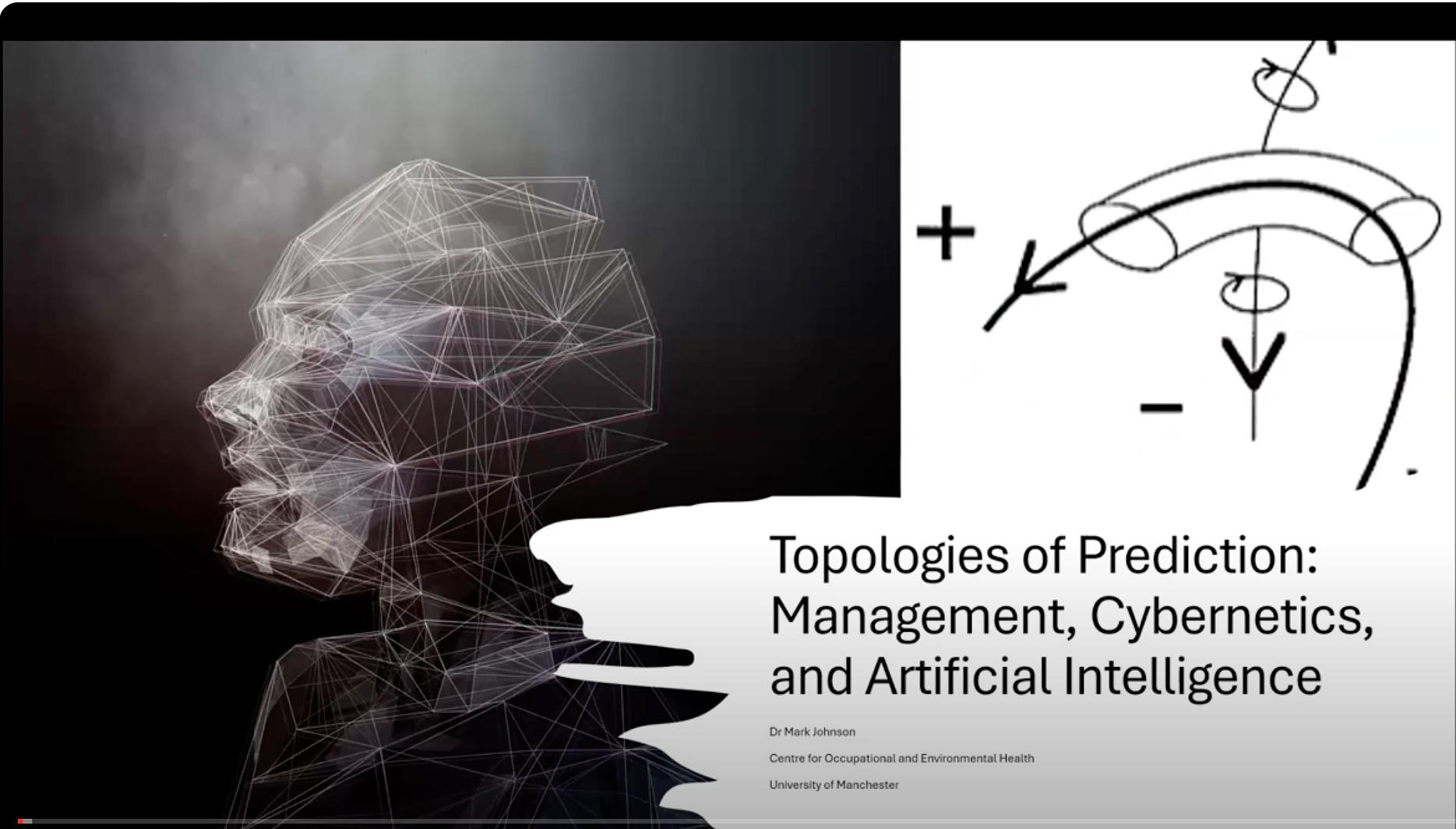
Cybernetics has tended to be ambivalent, if not sceptical, towards AI. This partly stems from disputes between computer scientists (e.g. Minsky’s lab at MIT) and cyberneticians (e.g. von Foerster’s Biological Computer Lab) in the 1960s, which were informed by deeper epistemological concerns that have been articulated by Winograd and Flores among others. Beer’s Management Cybernetics steers a path between these positions, with its focus on human collective decision and control and the practical ways that the distinction-making processes of society can be most effectively organised to maintain viability in complex environments.
AI’s recent advances mean that it is now a fundamental constituent of the environment for all of us, and the challenge for organisations is to adapt to it. This entails a deeper understanding of what the technology is, and this in turn invites a reinspection of cybernetic theory.
As a technology, AI is a predictive tool which, through recursive and fractal algorithmic processing of data redundancy, is able to anticipate the likely categories of new data. As an anticipatory technology it aligns with the theories of anticipatory systems of Robert Rosen, Daniel Dubois, Loet Leydesdorff and of Beer’s “System 4” in the Viable System Model. Beer’s thinking is important because while System 4 is a critical component of viable organisation (and often the component that is most overlooked in organisations), it must have effective channels of communication and coordination with the other regulating systems of the VSM and the environment.
Given that all anticipations – whether artificial or natural – are selections from a set of possibilities, the obvious question is “how is the selection mechanism constructed?”. In AI we can inspect a mechanistic model of the construction of a selection mechanism. Through this inspection, I show that AI has a topology which maps on to topological thinking in cybernetics from the past, particularly the “Interaction of Actors” theory of Pask, Beer’s Syntegration, the “Social Field Theory” of Lewin, and the mathematical ideas of Geometric Algebra of Hamilton and Clifford. These in turn point towards emerging evidence of underlying topologies in evolutionary biology, physics and consciousness.
A focus on AI’s structure, and the topological similarities between anticipatory systems of all kinds, reveals AI to be not simply another piece of IT, but a new kind of scientific instrument, whose proper use (like all scientific instruments) is to reveal deeper order in nature. Drawing on practical examples of AI’s potential, I argue that it is with the knowledge gained from this scientific use that we can help steer organisations to a viable future.
.
Speaker Bio

Dr Mark Johnson is an applied systems researcher in the fields of education, health and technology. His work focuses on cybernetic approaches to the organisation of health and education, and the role of technology in institutions. He is co-founder of a medical diagnostics AI company, lecturer in technology and occupational health at the University of Manchester, and international educational design consultant specialising in innovative AI-driven pedagogies working with universities in China and the EU.
